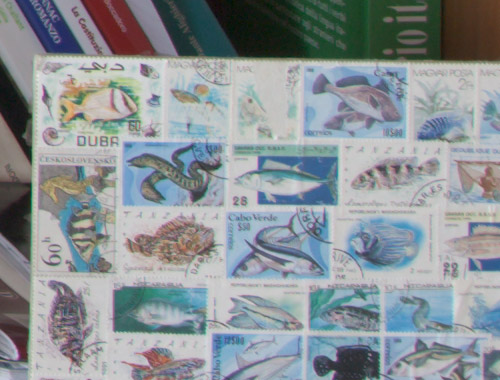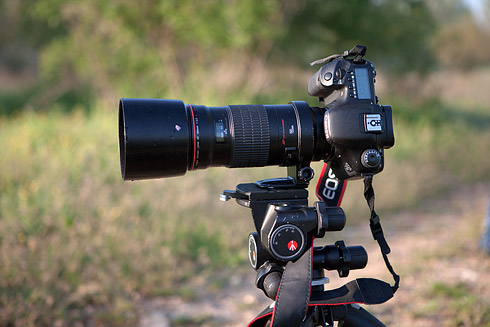JuzaPhoto uses technical cookies and third-part cookies to provide the service and to make possible login, choice of background color and other settings (
click here for more info).
By continuing to browse the site you confirm that you have read your options regarding cookies and that you have read and accepted the
Terms of service and Privacy.
You can change in every moment your cookies preferences from the page
Cookie Preferences, that can be reached from every page of the website with the link that you find at the bottom of the page; you can also set your preferences directly here
Canon 24-70 f/2.8 L USM (vs Canon 24-105 IS)
The Canon 24-70 2.8 was the only Canon professional mid-range zoom until 2005, when the 24-105 f/4 IS was announced. How does the 24-70 compete with its cheaper and stabilized rival? The 24-70 has one stop brighter aperture, but is it enough to compensate for the versatility of the 24-105? I have tested the 24-70 on 1DsIII and I have compared it with the 24-105.
Many thanks to my friend Sandro who loaned me the 24-70 and the 24-105!
As usual, I recommend to give a look to the page
Testing and reviewing a lens: it will help you to understand better this review and my testing methodology!
Specifications (compared with the 24-105)
����| � | � �Canon 24-70 f/2.8 L USM | � �Canon 24-105 f/4 L IS USM |
�
| �Angle of view | � �84º - 34º (on FF) | � �84º - 23º (on FF) |
�
| �Macro ratio | � �0.28x | � �0.23x |
�
| �Max Aperture | � �f/2.8 | � �f/4 |
�
| �Stabilization | � �No | � �Yes |
�
| �Autofocus | � �Ultrasonic AF Motor | � �Ultrasonic AF Motor |
�
| �Closest Focus | � �0.38 meters | � �0.45 meters |
�
| �Dimensions | � �83 (D) x 124 (L) mm | � �83 (D) x 107 (L) mm |
�
| �Weight | � �950 g | � �670 g |
�
| �Weather sealing | � �Yes | � �Yes |
�
| �Price | � �$ 1400 | � �$ 1050 |
�
| �Production | � �2002 - | � �2005 -� |
�
Built quality, stabilization and autofocus
The Canon 24-70 has great built quality, but it is really big and heavy. 1kg is a lot for a standard zoom! In comparison, the 24-105 has the same built quality, but it is much smaller and lighter. A peculiarity of the 24-70 is that it is "folded" at 70mm, while it gets longer at 24mm: the opposite of conventional zooms. This particular design has been created to make the lens extend inside the lens hood, so when you mount the hood, it looks as if the lens was not extending during zooming.
The 24-70 has a fast autofocus (about on par with the 24-105, I don't see noticeable differences) but it lacks of a very important feature: image stabilization. Rumors of a 24-70 IS has been floating around for years, but so far Canon has not announced yet this lens.
The big, huge question about the 24-70 is...what is better, 24-70 2.8 or 24-105 IS? I have received this question dozen of times, and my reply is always the same: for me the the range of the 24-105 and the stabilization are more important than the f/2.8 aperture, but there is not an answer for everyone...it depends by your necessities. Let's give a more in-depth look to the pros and cons of these lenses.
The difference between 70 and 105mm is not small. You can cover the 70-100mm focal lengths with a tele zoom, but if you want to walk around with only one lens, the 24-105 is more versatile. Talking about background blur, instead, the 24-70 can give more separation from background than 24-105 thanks to its 1 stop wider aperture; that said, in nature photography you will never use these apertures, most landscape photos are taken at f/11 or f/16, a wide aperture helps only in night photography.
The image stabilization gives an advantage of 2-3 stops, while the f/2.8 aperture gives 1 stop faster shutter speed than f/4. For sport and fast moving subject, the f/2.8 aperture is more important than IS: remember that a faster shutter speed freeze both you movements and subject movements, while IS helps only with your movements. For static subjects, instead, stabilization is better than wide aperture: shooting with the 24-105 you can get both more depth of field and less risk of blur, when you are handholding the camera.
One last thing is that the 24-105 is smaller, lighter and cheaper than the 24-70 - less weight in your bag and more money in your pockets is an always welcome improvement :-)

Image quality (in comparison with Canon 24-105)
I have tested the lenses on my 1DsIII (21 megapixel, fullframe). The lenses were mounted on tripod; I have used mirror lock up and self timer. The following images are 100% crop from the unprocessed RAW file.
����| � | � �Canon 24-70 at 24 mm, center | � �Canon 24-105 at 24 mm, center |
�
| �f/2.8 | � � | � � |
�
| �f/4 | � � | � � |
�
| �f/8 | � � | � � | �
�
����| � | � �Canon 24-70 at 24 mm, corner | � �Canon 24-105 at 24 mm, corner |
�
| �f/2.8 | � � | � � |
�
| �f/4 | � � | � � |
�
| �f/8 | � � | � � | �
�
At 24mm, the Canon 24-70 is slightly better in the center, while the 24-105 has slightly better corners.
����| � | � �Canon 24-70 at 35 mm, center | � �Canon 24-105 at 35 mm, center |
�
| �f/2.8 | � � | � � |
�
| �f/4 | � � | � � |
�
| �f/8 | � � | � � | �
�
����| � | � �Canon 24-70 at 35 mm, corner | � �Canon 24-105 at 35 mm, corner |
�
| �f/2.8 | � � | � � |
�
| �f/4 | � � | � � |
�
| �f/8 | � � | � � | �
�
At 35mm, the two lenses are identical in the center, while the 24-105, surprisingly, has much better corners.
����| � | � �Canon 24-70 at 70 mm, center | � �Canon 24-105 at 70 mm, center |
�
| �f/2.8 | � � | � � |
�
| �f/4 | � � | � � |
�
| �f/8 | � � | � � | �
�
����| � | � �Canon 24-70 at 70 mm, corner | � �Canon 24-105 at 70 mm, corner |
�
| �f/2.8 | � � | � � |
�
| �f/4 | � � | � � |
�
| �f/8 | � � | � � | �
�
At 70mm, the 24-70 and the 24-105 are nearly identical both in the center and in the corners.
Samples and comments
These are some sample photos taken with the Canon 24-70 L USM on Canon 1DsIII. You can download either the untouched photo (JPEG converted from RAW without any additional post processing; minimum contrast and saturation, no sharpening, no AC, distortion or vignetting correction) or the post processed version. The untouched photo is a good way to see the real image quality of the lens, and the post processed versions allow to see the final quality you can get with good post processing techniques.
�
�
Honestly I am not impressed by the image quality. If you stop down a bit it is pretty good (the 24 f/11 and 35 f/5.6 samples are great), but wide open it is not sharp; even at f/4 it is a bit worse than the 24-105.
Conclusions
From the results of this test, it would seem obvious to go for the 24-105 IS. That said, I have some doubts about the 24-70 I have tested - can it be actually that bad? Or is it a bad copy? The bad copy option would seem the most likely, but some months ago I did another 24-105 vs 24-70 test with another copy of the 24-70, and the results are the same. At that time, I did not publish the test because I thought that it was for sure a bad copy or there was some error in the test, but the results of this new test confirm my previous findings. So, either I got two bad copies, of the 24-70 has so-so image quality...personally, I'd say two bad copies. I have read many opinions about this lens and the majority say that it is very sharp, while some others (about 10%) complain about the lack of sharpness: essentially, I think that Canon has a lot of sample variation on the 24-70 and poor quality control.
Anyway, even if the 24-70 had identical or slightly better image quality than the 24-105, I'd go for the 24-105. The difference between f/2.8 and f/4 is not huge, and in many situation the image stabilization greatly outweighs the 1 stop wider aperture. Other than that, the 24-105 has a wider zoom range, it is more compact, lighter and less expensive.





































 JuzaPhoto contains affiliate links from Amazon and Ebay and JuzaPhoto earn a commission in case of purchase through affiliate links.
JuzaPhoto contains affiliate links from Amazon and Ebay and JuzaPhoto earn a commission in case of purchase through affiliate links.